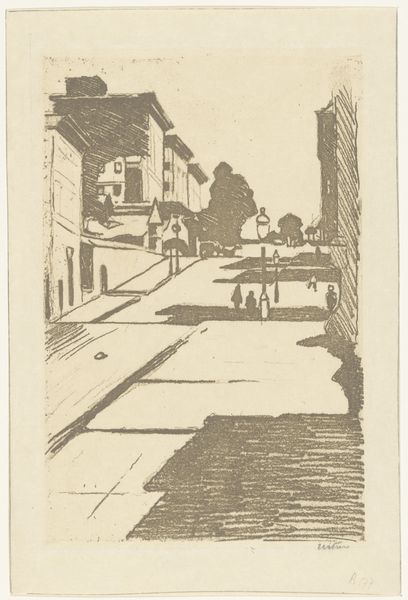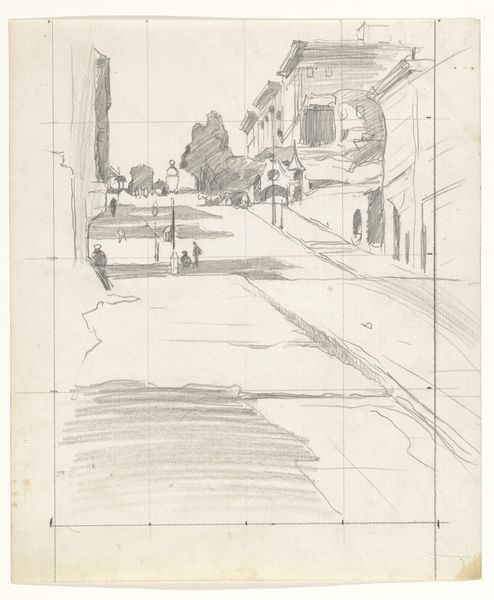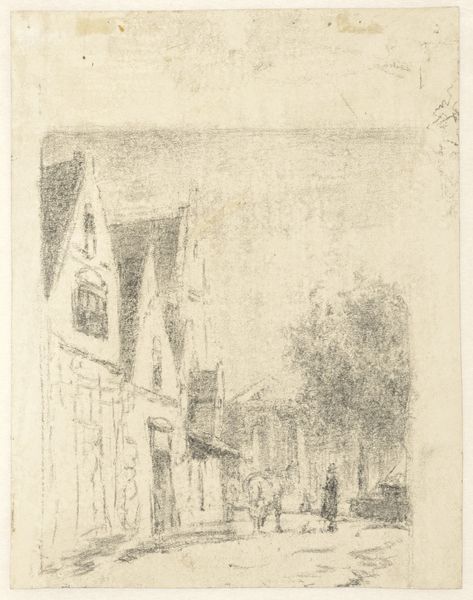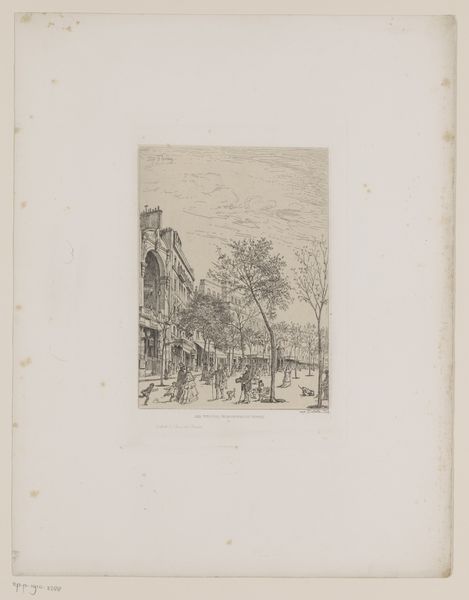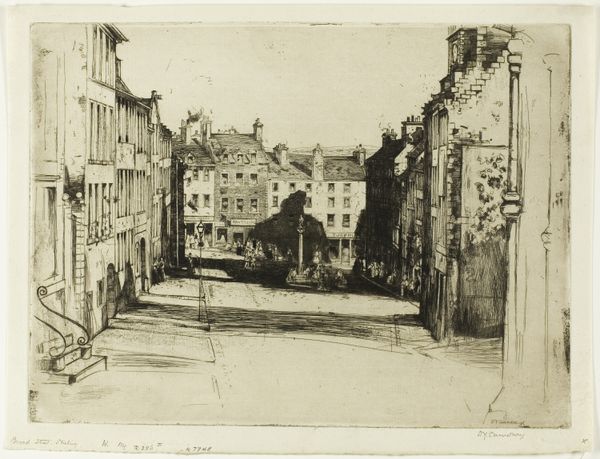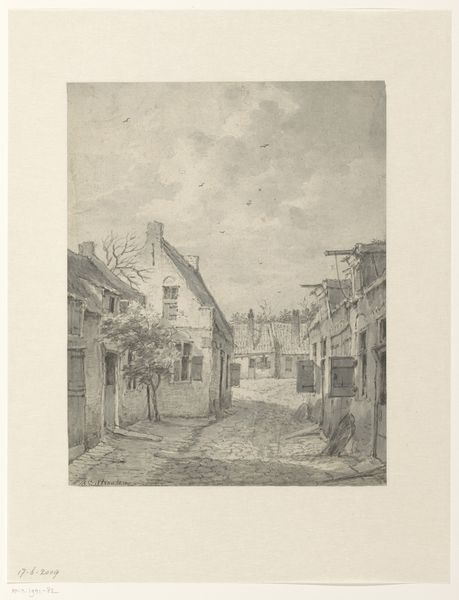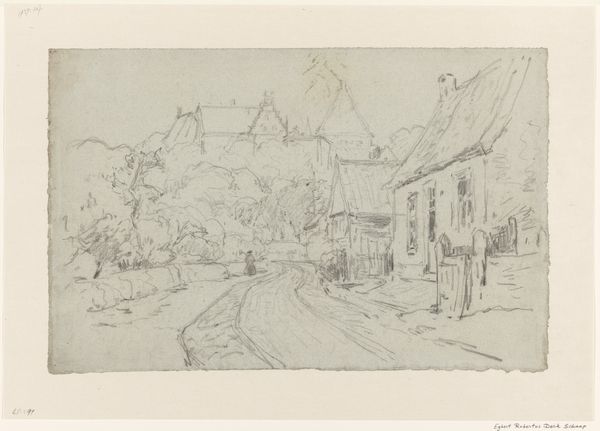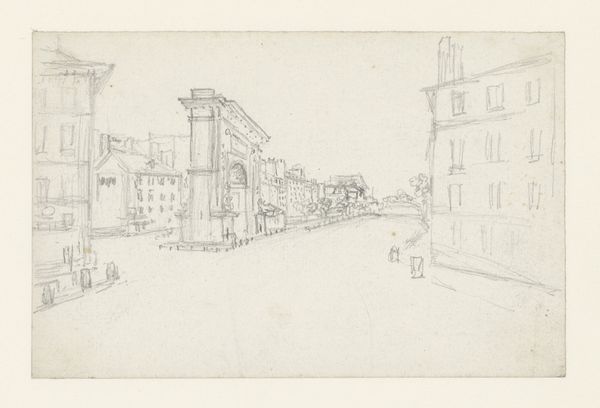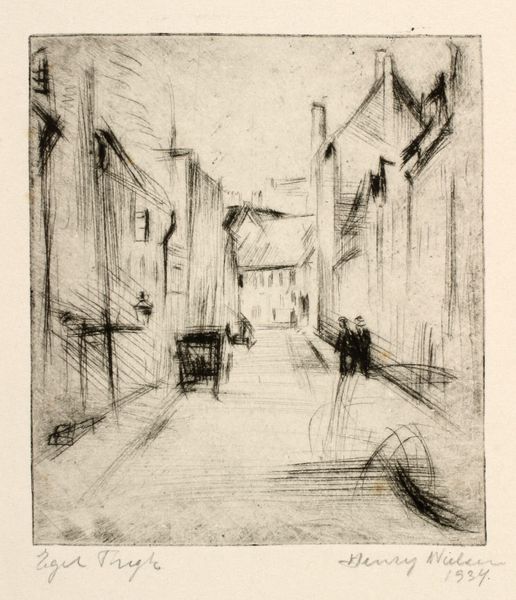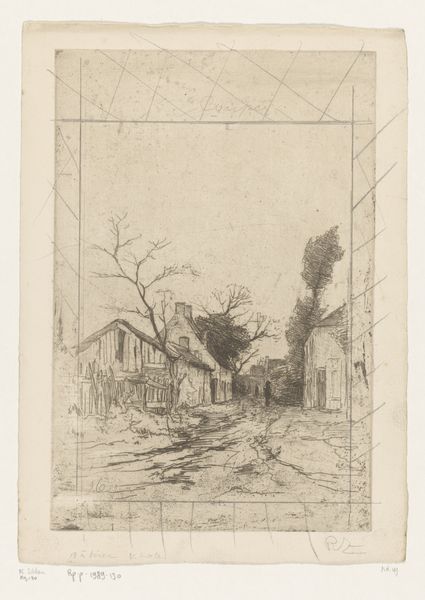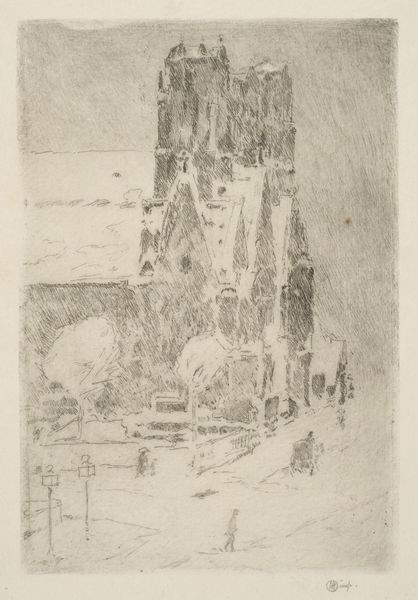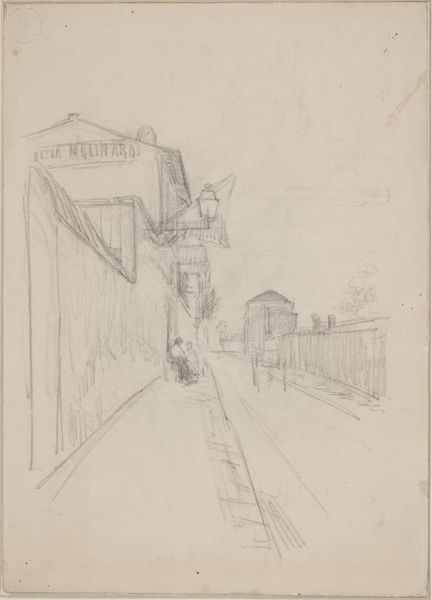
Gezicht op Maison Street en het Fairmont hotel in San Francisco c. 1915 - 1919
0:00
0:00
Dimensions: height 240 mm, width 160 mm
Copyright: Rijks Museum: Open Domain
Curator: Up next, we have "Gezicht op Maison Street en het Fairmont hotel in San Francisco," a cityscape etching by Willem Witsen, created around 1915-1919. What's your initial take on this work? Editor: My immediate impression is one of immense stillness. Despite the implied urban environment, it's strikingly quiet, almost melancholic. There's something about the sparseness of the lines, the near monochrome... Curator: Indeed. Witsen was a master of etching, and here we see a particularly skillful handling of the medium. The delicate lines create a remarkable sense of depth and atmosphere, even though the image is rather minimal in its details. Look at how he suggests the sunlight reflecting off the street surface, using only the barest of strokes. Editor: And those are lines etched meticulously, each one an incision, an act of physical labor with specific material constraints: acid, copper, the artist’s hand guided with control. It raises the question, why depict modernity with a rather archaic medium? It is, perhaps, about reasserting a manual engagement in the increasingly mechanized and impersonal urban experience? Curator: An interesting consideration. Structurally, the composition is quite compelling. The converging lines of the street draw the viewer’s eye upwards, towards the Fairmont Hotel in the distance, emphasizing the urban landscape's verticality and perhaps, the social stratification embedded within. Editor: The perspective undeniably organizes the power relations visually. But the question that also intrigues me is, considering its place here at the Rijksmuseum, how does viewing a San Francisco street scene inflect our understanding of Dutch art history and its dialogue with the broader world, considering the context of trade, globalization, and the materiality of its production and its cultural significance across geographical distances? Curator: Ultimately, the work encourages us to see the world through a filtered lens, one where even the most modern cityscapes can be rendered in a classic, contemplative mode. It invites a silent dialogue between the viewer and the seen, or perhaps more significantly, between what is selected as "Dutch Art" and how it speaks to a broader global identity. Editor: I’m left reflecting on the journey of the materials and the artist’s hand, how these things traveled to depict another place. The cultural exchange and manual labor embedded in the copper are really what makes this piece stick with me.
Comments
No comments
Be the first to comment and join the conversation on the ultimate creative platform.
